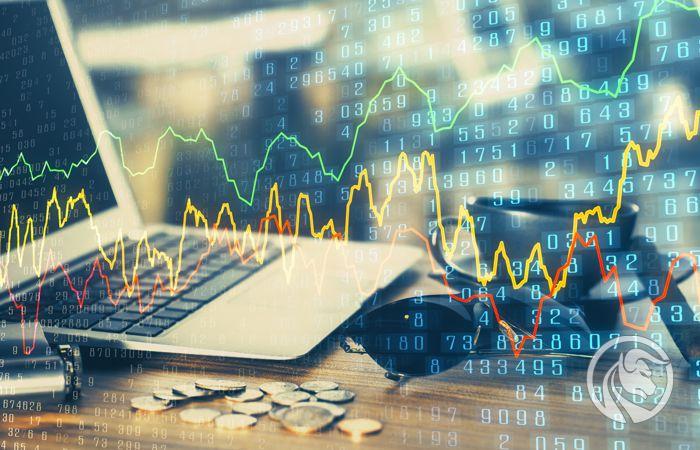Investment styles
Investment styles? There are several types of them, which are distinguished primarily by the nature of the trade and the time perspective of the transaction. In the literature and websites devoted to investing (not necessarily on the currency exchange), you can find various definitions of these styles. Their descriptions below refer to the presentation on Forex market and are the subjective opinion of the authors.
Short-term investments
Investing in the short term is most often associated with transactions that are closed within one year. In practice, it would appear that there is only this type of trade in the currency market. The Forex market theoretically operates 3 times longer than the stock market (sessions last about 8 hours a day, FX 24 hours on day) so we would define short-term trade on it within 1-3 months. It does not impose any specific methodology in making decisions, nor does investments in the medium and long term.
Medium-term investments
On the Internet you can find a definition that these are transactions both under one year and from 1 to 5 years. In our opinion, in the currency market, the average term is a period that may overlap with a short-term timeframe depending on the adopted restrictions and ranges from 1-3 months to 6 months. Usually, analyzes are performed at large intervals charts type 4-hour, 1-day.
READ NECESSARY: Timeframe Forex. We choose the time interval.
Long term investments
It's hard to find one general and correct time frame, but the most common definition is that long-term investments are those over one year without an upper limit. In Forex, any position held for more than six months, in our opinion, may already be called a long-term one. There are definitely the least of them, and this is due to the lack of patience on the part of investors and the number of constantly changing factors on the market. Often, long-term investors use the fundamental analysis, which gains efficiency mainly in a broader time perspective, but it is quite time-consuming. Charts are usually analyzed on one-day and weekly intervals.
Day-trading
It is undoubtedly the dominant investment style among Forex traders. Day-trading is a type of trading that does not include holding an open position for the next day. All trades must be completed and closed before the start of the next session. Therefore, low chart time intervals dominate here. Usually from hourly downwards.
Scalping
Scalping is a kind of day-trading. As in DT, positions are closed within the same session with the difference that they are usually very short trades with close Stop Loss and / or take Profit. There is no single definition of scalping that would specify a rigid time frame or distance in orders, however, it can be said that positions are not open for more than a few minutes and usually end up with a profit or loss of a few or a dozen pips. The analysis usually uses charts with a time interval of up to 30 minutes. You can also meet minute, second or even based only on the range of pips movement (so-called range bars).
swing trading
An intermediate style between day-trading and short-term investing. It is said that transactions lasting from 1 to 4 days dominate here. As the name suggests, this technique involves catching fluctuations from individual waves in which the market moves. The analysis typically uses charts over the time span from M30 to H4.
READ ALSO: Goodman's Wave Theory as an alternative to Elliot's Wave Theory. Jim Poniat
News trading
A specific form of trading that focuses on a specific methodology based on which transactions are concluded. As the name suggests, market news is used for this purpose. News trading investors usually trade the pairs most susceptible to macroeconomic data and discrepancies in results versus forecasts. The greater the deviation of the result of a given index from the economists' forecast, the stronger the exchange rate reaction. The basis is the volatility of the currency pair. As volatility increases, the risk of a trade failing is reduced. There are many details that affect the end result of this type of trading, ranging from liquidity and slippage, to the method of entering and exiting the market, to choosing the right parameters for the order. Due to the fact that the whole action after the release of macro data is usually very fast, traders usually use automatic strategies to trade.






















![Forex Club – Tax 9 – Settle tax on a foreign broker [Download the Application] Forex Club - Tax 9](https://forexclub.pl/wp-content/uploads/2024/02/Forex-Club-Podatek-9-184x120.jpg?v=1709046278)
![Trading View platform – solutions tailored to the needs of traders [Review] trading view review](https://forexclub.pl/wp-content/uploads/2024/03/trading-view-recenzja-184x120.jpg?v=1709558918)
![How to connect your FP Markets account to the Trading View platform [Guide] fp markets trading view](https://forexclub.pl/wp-content/uploads/2024/02/fp-markets-trading-view-184x120.jpg?v=1708677291)
![How to invest in ChatGPT and AI? Stocks and ETFs [Guide] how to invest in chatgpt and artificial intelligence](https://forexclub.pl/wp-content/uploads/2023/02/jak-inwestowac-w-chatgpt-i-sztuczna-inteligencje-184x120.jpg?v=1676364263)



![Izabela Górecka – “Success on the market depends not only on knowledge, but also on emotional stability” [Interview] Izabela Górecka - interview](https://forexclub.pl/wp-content/uploads/2024/04/Izabela-Gorecka-wywiad-184x120.jpg?v=1713870578)
![WeWork – the anatomy of the collapse of a company valued at $47 billion [WeWork, part II] wework bankruptcy story](https://forexclub.pl/wp-content/uploads/2024/04/wework-bankructwo-historia-184x120.jpg?v=1711729561)
![Adam Neumann – the man who screwed up Softbank [WeWork, part AND] adam neumann wework](https://forexclub.pl/wp-content/uploads/2024/04/adam-neumann-wework-184x120.jpg?v=1711728724)





![The most common mistakes of a beginner trader - Mr Yogi [VIDEO] Scalping - The most common mistakes of a beginner trader - VIDEO](https://forexclub.pl/wp-content/uploads/2024/03/Scalping-Najczestsze-bledy-poczatkujacego-tradera-VIDEO-184x120.jpg?v=1711601376)
![Learning patience: No position is also a position - Mr Yogi [VIDEO] Scalping - Learning patience - No position is also a position - VIDEO](https://forexclub.pl/wp-content/uploads/2024/03/Scalping-Nauka-cierpliwosci-Brak-pozycji-to-tez-pozycja-VIDEO-184x120.jpg?v=1710999249)
![When to exit a position and how to minimize losses - Mr Yogi [VIDEO] Scalping - When to exit a position and how to minimize losses - VIDEO](https://forexclub.pl/wp-content/uploads/2024/03/Scalping-Kiedy-wyjsc-z-pozycji-i-jak-minimalizowac-straty-VIDEO-184x120.jpg?v=1710336731)




![Day Trading or Scalping? Money Management – Mr Yogi, part 2 [VIDEO] Money Management - MrYogi. Time frames and position size risk](https://forexclub.pl/wp-content/uploads/2023/11/Money-Management-przedzialy-czasowe-v2-300x200.jpg?v=1701591046)

![Day Trading or Scalping? Speculation on low intervals – Mr Yogi, part 1 [VIDEO] Daytrading or Scalping - speculation on low TFs](https://forexclub.pl/wp-content/uploads/2023/11/Daytrading-czy-Scalping-spekulacja-na-niskich-TF-v3-300x200.jpg?v=1701590982)











